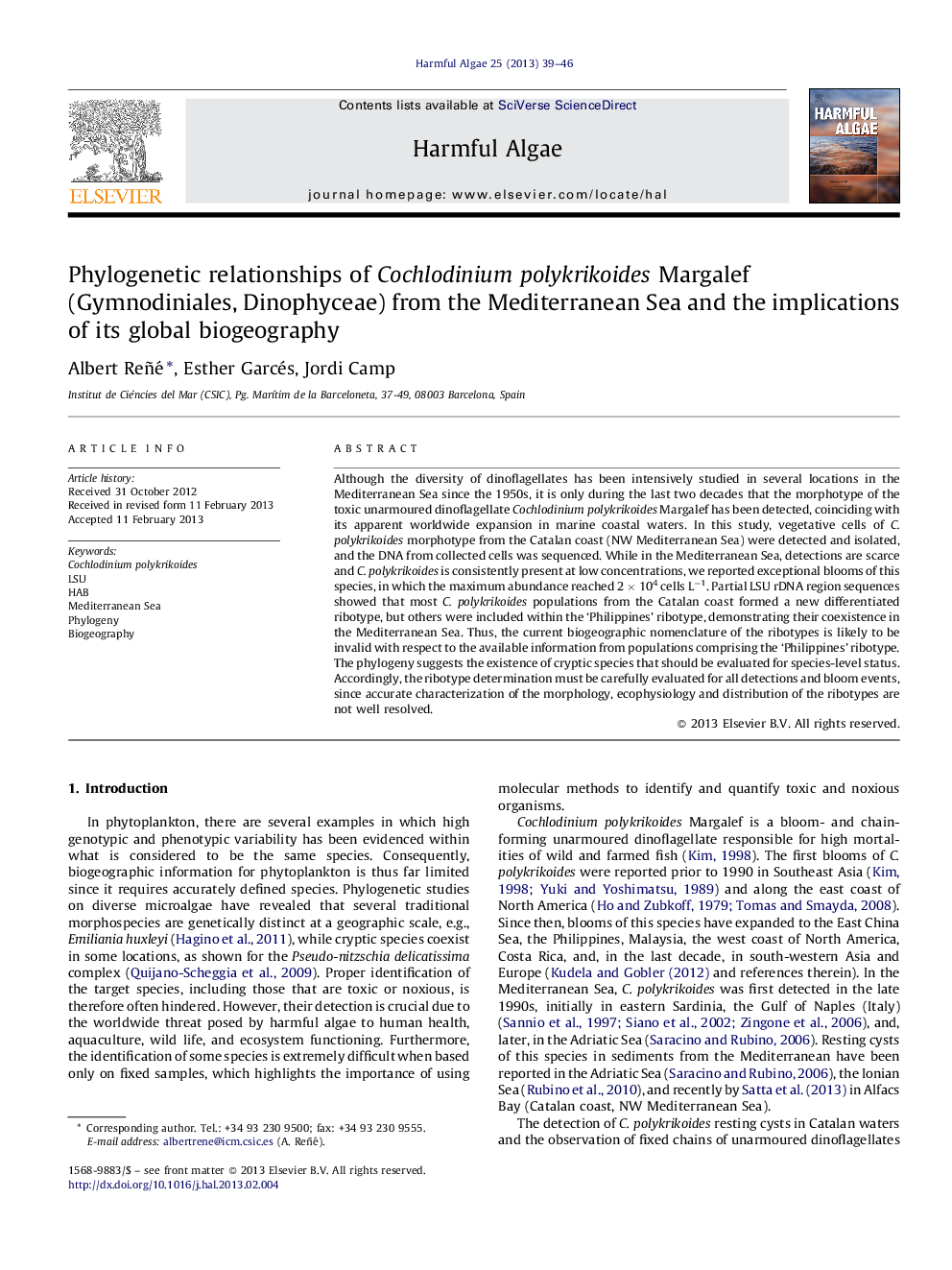| Article ID | Journal | Published Year | Pages | File Type |
|---|---|---|---|---|
| 4545480 | Harmful Algae | 2013 | 8 Pages |
Although the diversity of dinoflagellates has been intensively studied in several locations in the Mediterranean Sea since the 1950s, it is only during the last two decades that the morphotype of the toxic unarmoured dinoflagellate Cochlodinium polykrikoides Margalef has been detected, coinciding with its apparent worldwide expansion in marine coastal waters. In this study, vegetative cells of C. polykrikoides morphotype from the Catalan coast (NW Mediterranean Sea) were detected and isolated, and the DNA from collected cells was sequenced. While in the Mediterranean Sea, detections are scarce and C. polykrikoides is consistently present at low concentrations, we reported exceptional blooms of this species, in which the maximum abundance reached 2 × 104 cells L−1. Partial LSU rDNA region sequences showed that most C. polykrikoides populations from the Catalan coast formed a new differentiated ribotype, but others were included within the ‘Philippines’ ribotype, demonstrating their coexistence in the Mediterranean Sea. Thus, the current biogeographic nomenclature of the ribotypes is likely to be invalid with respect to the available information from populations comprising the ‘Philippines’ ribotype. The phylogeny suggests the existence of cryptic species that should be evaluated for species-level status. Accordingly, the ribotype determination must be carefully evaluated for all detections and bloom events, since accurate characterization of the morphology, ecophysiology and distribution of the ribotypes are not well resolved.
► Cochlodinium polykrikoides Margalef is first detected in the NW Mediterranean, producing a bloom. ► We present the morphology and ecophysiology of the populations from the Catalan coast. ► Some strains form a new ribotype, but others are included within the ‘Philippines’ one. ► Current biogeographic nomenclature of the ribotypes may not be adequate. ► The incomplete characterization of Cochlodinium polykrikoides needs clarification.
